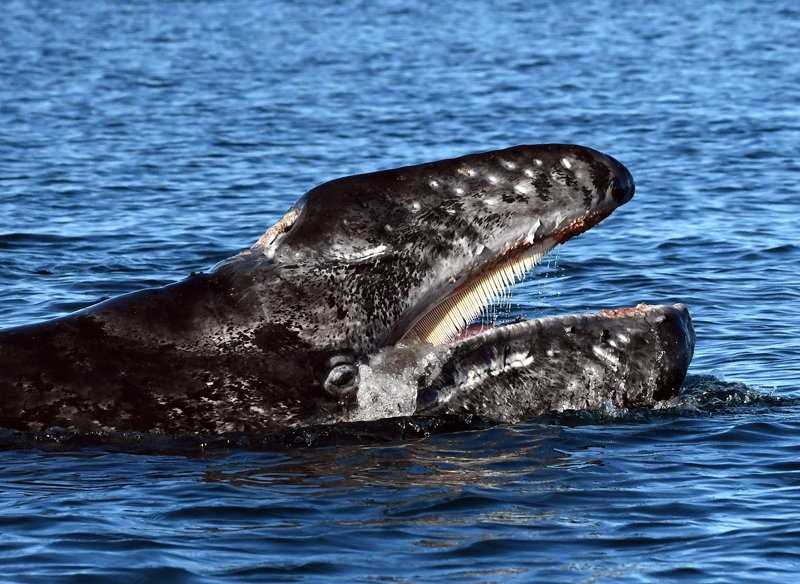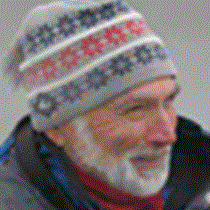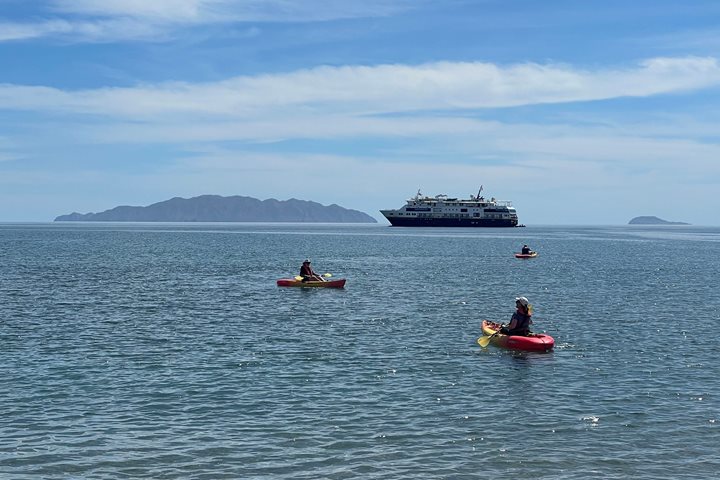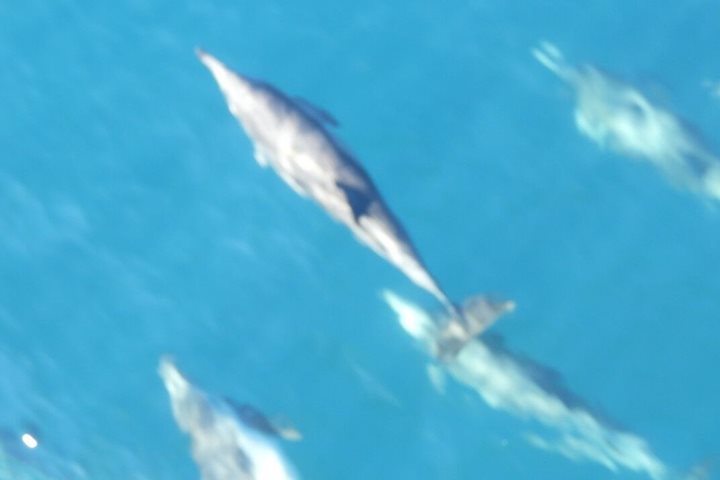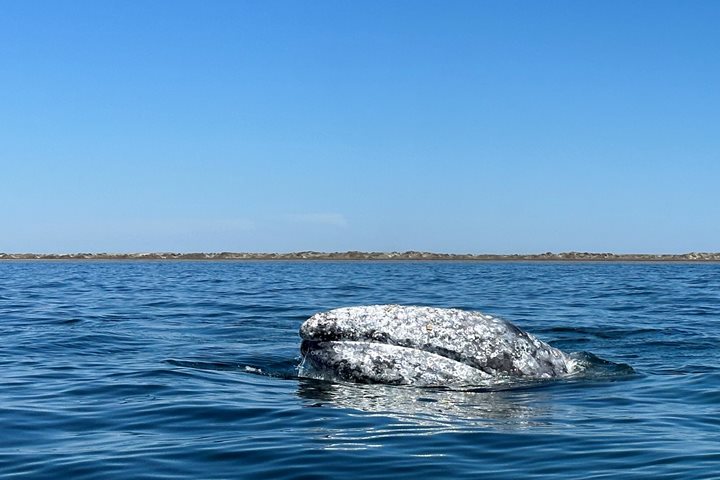Numerous cow and calf pairs swam north and south in the bay under clear skies and warm sunny weather. Our two whale-watching outings went quickly as we marveled at how different each pair was. Young ones stayed close to their mothers, possibly getting a slip-stream effect. Older calves seemed to have minds of their own, straying from the invisible leash, going in the opposite direction for an “outing”. One calf branched out into half rolls or tried to stay on top of its mother’s back as she surfaced. Another was “bulldozing” through the water with its mouth open, while others tried breaching. They were sort of like playful aquatic kids, which shouldn’t come as a surprise.
A young calf traveled quickly and always surfaced with its mouth open. In the first image above you can see a row of baleen plates lined up along the upper jaw. These are made of keratin, like our fingernails. If we could see a single detached baleen plate, it would look like a long, flat triangle smooth on the outside edge with the inner margin frayed into hundreds of hair-like fringes. The top of the triangle is the growing area on the upper jaw. Although we can see only one side, there is another row or rack opposite it. As adults, the mouth sucks up mud and food and then closes just to the line of baleen. The tongue then pushes upwards, forcing water out while straining prey by the fringes on each of over 200 baleen plates.
The dimples in front of the blowholes are true hairs, modified for a sensory function like whiskers on a cat. The beige dots around the blowholes and margins of the jaws are tiny creatures called whale lice or cyamids. These helpful invertebrates will eventually eat the dead skin that can be seen peeling from the upper jaw. The whale’s eye is just behind the corner of the mouth.
During much of the afternoon the National Geographic Sea Bird was steered through the narrow channel of the Hull Canal by our friend and pilot into Magdalena Bay as we devoured a delicious picnic on the bridge deck. We later cruised through La Entrada, the entrance to Magdalena Bay, and passed many gray whales as we continued into the open Pacific. Soon the sun set to add a finale to another stress-free day.

